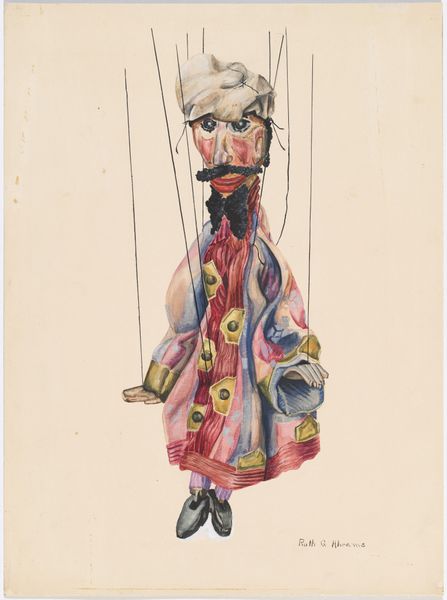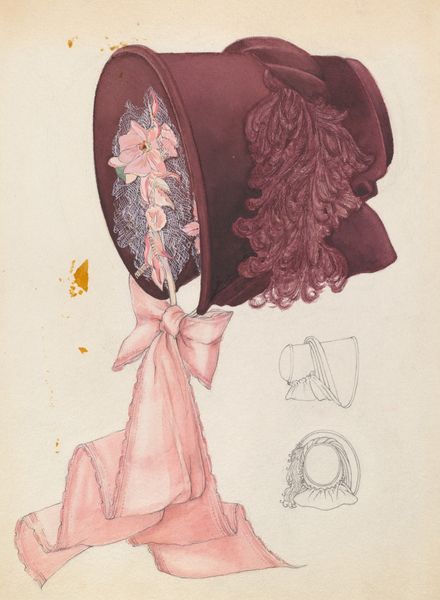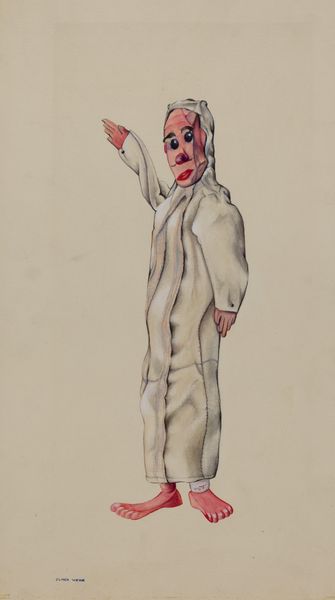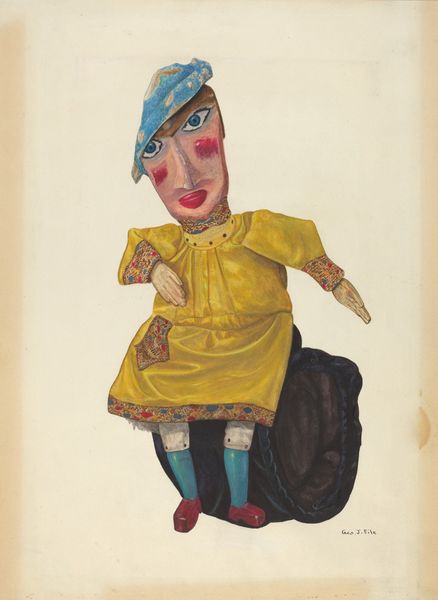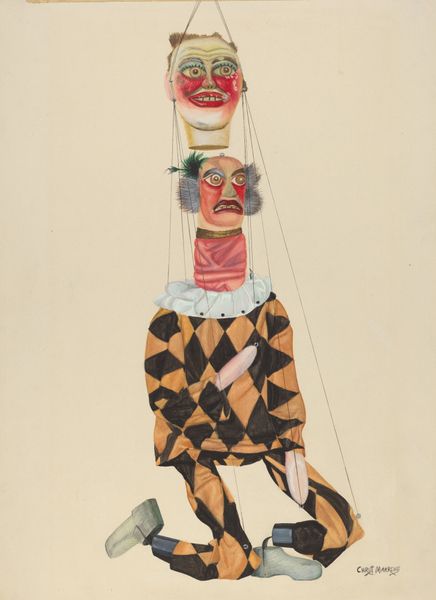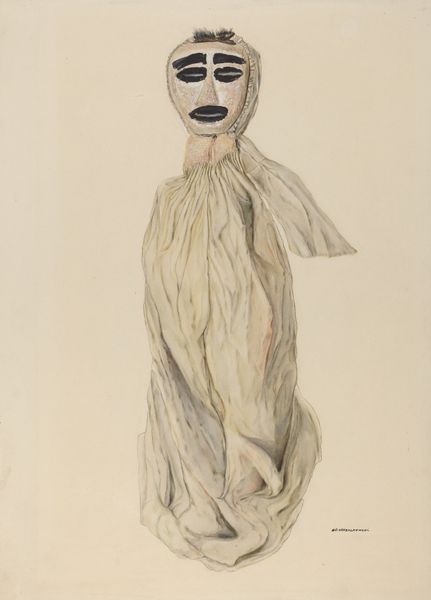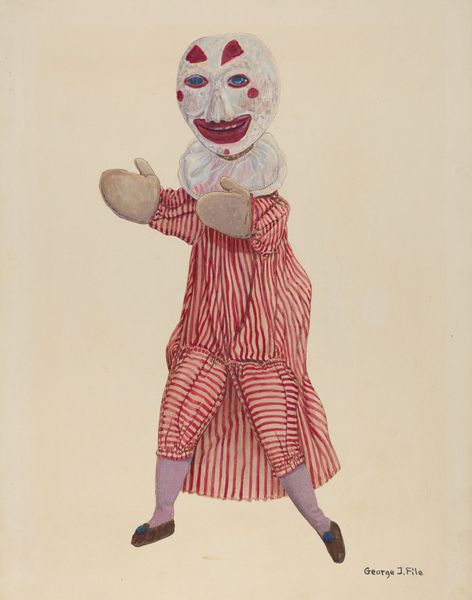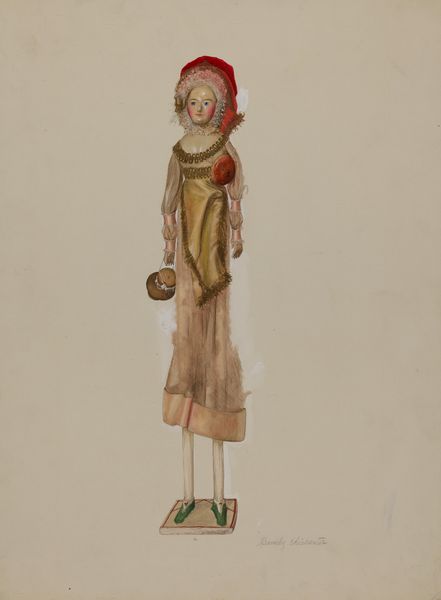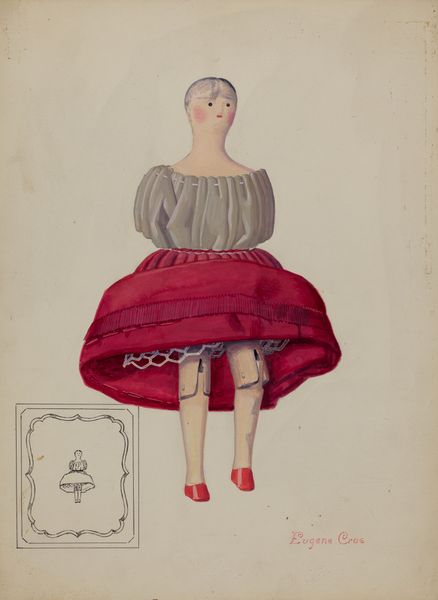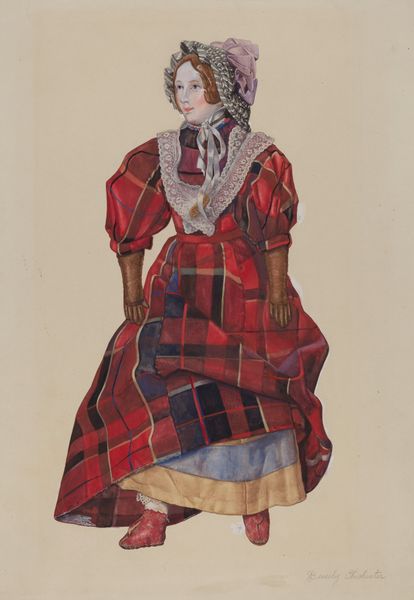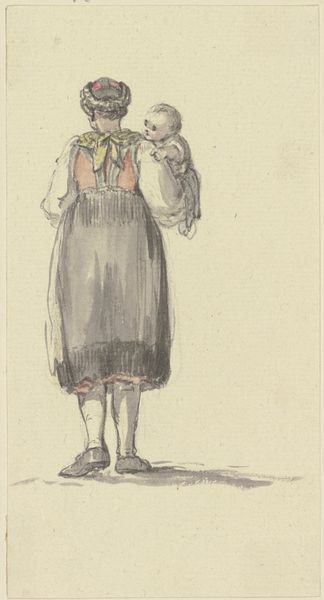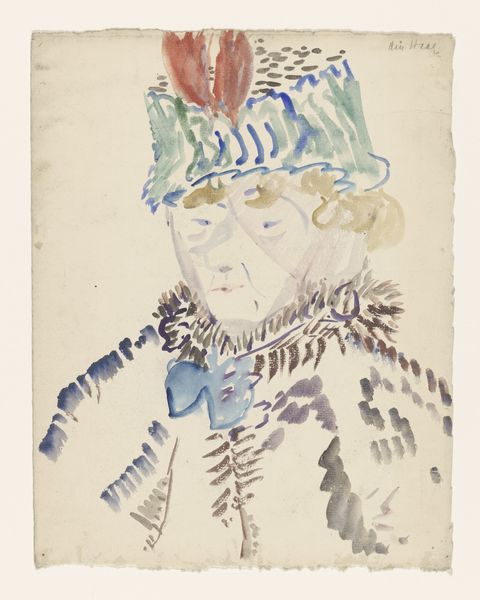
drawing, coloured-pencil, watercolor
#
portrait
#
drawing
#
coloured-pencil
#
caricature
#
caricature
#
watercolor
#
coloured pencil
#
portrait drawing
#
watercolour illustration
#
watercolor
Dimensions: overall: 50.9 x 38.1 cm (20 1/16 x 15 in.) Original IAD Object: 16 1/2" high
Copyright: National Gallery of Art: CC0 1.0
Curator: Here we have James McLellan’s "Lady Marionette," circa 1937. It’s rendered in watercolor and coloured pencil. What do you make of it? Editor: She's peculiar! There's something unsettling, but also rather humorous about her… particularly those hands. Curator: Those are such striking, almost garish, peach-colored appendages, aren't they? The puppetry evokes this idea of being controlled, doesn't it? Consider how the image plays into longstanding cultural anxieties around female autonomy. Is she a lady acting out a prescribed role? Editor: Absolutely, but I also see a deliberate act of making, right? Look at the materials, the way McLellan builds the coat, the visible brushstrokes creating the fur trim, those thick pencils giving definition… It’s craft, but positioned as commentary on class and societal expectation. Curator: Yes, and notice how the visible strings attach to the marionette. This exposes the constructed nature of identity, like peeling back the layers of societal performance. What is masked by wealth and status? Editor: Right, and look at that dark overcoat—it's almost collapsing in on itself. This artwork makes me consider the labor required to *produce* these signifiers of status; think of the mills that dyed and manufactured fabric at that time. We're talking about working-class hands facilitating upper-class affectation, all being controlled, literally or otherwise, by the structures of society. Curator: That relationship feels intensified in the figure's vacant, somewhat deadpan expression. Her very humanity feels obscured, doesn't it? Reduced. The puppetry, though literal, serves as a larger metaphor for how external forces can diminish individual spirit. Editor: Absolutely. It all suggests the making of image is directly connected to societal constructs of that time. Notions of gender and wealth here being manufactured for public consumption. It feels less about individual psychology and more about the mechanisms behind perception and status. Curator: Food for thought. It will be fascinating to hear our audience members consider her symbolism within their own context. Editor: I agree! It leaves us pondering the ways in which the making of image impacts the making of a person.
Comments
No comments
Be the first to comment and join the conversation on the ultimate creative platform.
